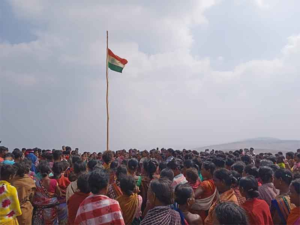K. Ashok Rao
As on August 31, 2019, India had one of the largest operational synchronous grids in the world, with 360.78 GW of installed power generation capacity.
The famous blackout of July 30 and 31, 2012, was the largest power outage in India. It affected more than 620 million people – half the country’s population. Apart from other causes of suffering, the outage also stranded 300 railway trains and trapped 200 miners underground. The monetary loss ran into lakhs of crores of rupees. The episode highlighted the scale of what could happen in the event of a power grid failure. The cause of the problem in 2012 was a trip on the 400-kV Bina-Gwalior line on July 30 and, on July 31, a relay problem near the Taj Mahal.
It is important to note that the grid is sensitive to the small disturbances. But unlike all previous grid failures, India was faced with the prospect of a potential grid failure due to a human decision. On April 3, 2020, Prime Minister Narendra Modi appealed to the country’s citizens to shut off their lights at home at 9 pm on April 5 for 9 minutes, and instead light oil lamps, candles and torches and flash them from their balconies, gates, rooftops, etc. to show support for workers maintaining the country’s essential services.
The implication of this plan for the power sector was that suddenly at 9 pm on April 5, some 12,452 MW of power – based on the consumption pattern on March 29, the previous Sunday – would just drop off the grid and come back after only 9 minutes. Without drastic intervention, such shifts in power could easily spell the collapse of the all-India grid, and if such a collapse had indeed occurred, India could have been partially powerless for 24 hours and it could have taken a week to restore the whole grid.
Fortunately, unlike the hours’ notice the prime minister gave before imposing the 21-day national lockdown, power engineers had 60 hours between announcement and implementation. The power grid had to be saved at all costs. All hands on deck.
The big picture was that the grid would be saved if there were no sudden shocks and if generation matched demand. This is because electrical power cannot be stored consumed later; it has to be consumed when produced and vice versa, save for small amounts in batteries. After detailed examination and many consultations, the Power System Operation Corporation Ltd. (POSOCO) issued an advisory requiring the following actions:
- During the peak evening hours, i.e from 6:10 pm to 8 pm, hydroelectric generation would have to be reduced and conserved for providing flexibility during the 9-minute event. In this time, thermal and gas generation would have to be scheduled in such a way that these stations become able to manage the peak.
- All defence mechanisms, such as frequency protection relays and automatic demand management systems, would have to be in service and in healthy condition.
Since this voluntary reduction of load was unprecedented, some senior officials also sent emails pleading with people to keep their fans on even if they put their lights out. Less knowledgeable but nonetheless well-meaning souls also advised consumers to turn on all electrical devices, including geysers and air conditioners, to keep up demand.
Officials predicted that if all 171.3 million households participated, the loss of load could be 12,452 MW. The actual total demand drop recorded during the event turned out to be 31,089 MW – more than twice as high! This implies that in order to save the grid and keep voltages and line loads within permissible limits, engineers turned off select transmission lines. This in turn means large areas were without power before and during the event, and so compliance was not totally voluntary.
In addition to revenue, there were also huge losses incurred by the need to ramp up and then down thermal power stations’ generated power since this exercise requires many tonnes of steam being released into the air. Other major direct costs came from deploying almost the entire staff of the power sector on duty, possibly contravening the lockdown’s physical distancing requirements.
The questions automatically arise: Was the nine-minute observance called for when the stakes were known to be so high? What is the accountability of the political class in India, and do they have a license to inflict such losses? And are we the people to demand and agitate for accountability or should we simply shrug our shoulders and forgive them because we believe they don’t know what they are doing?




